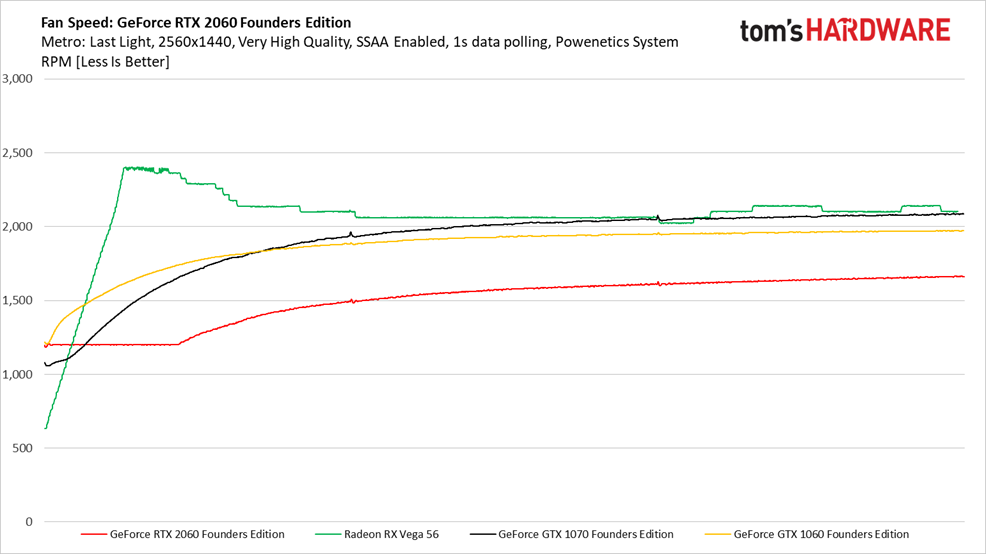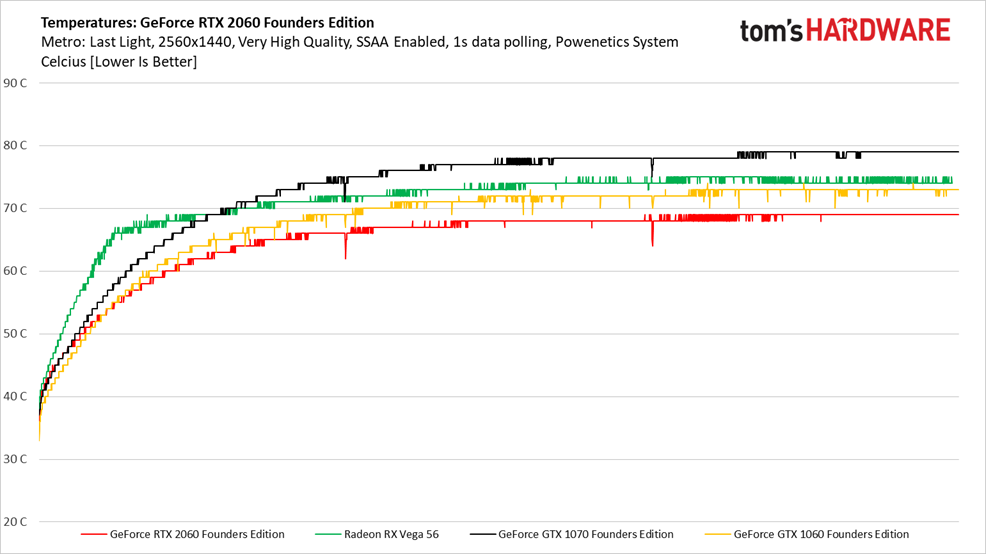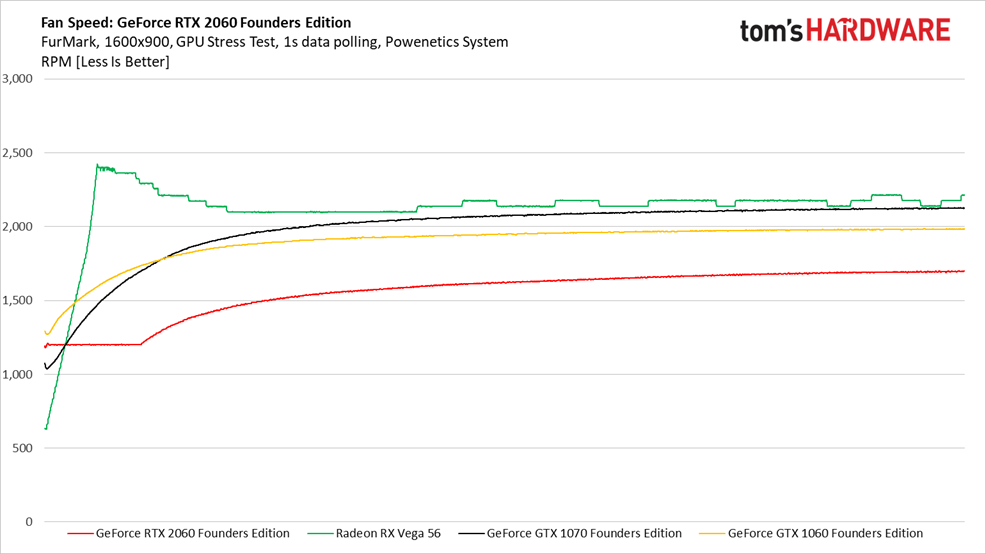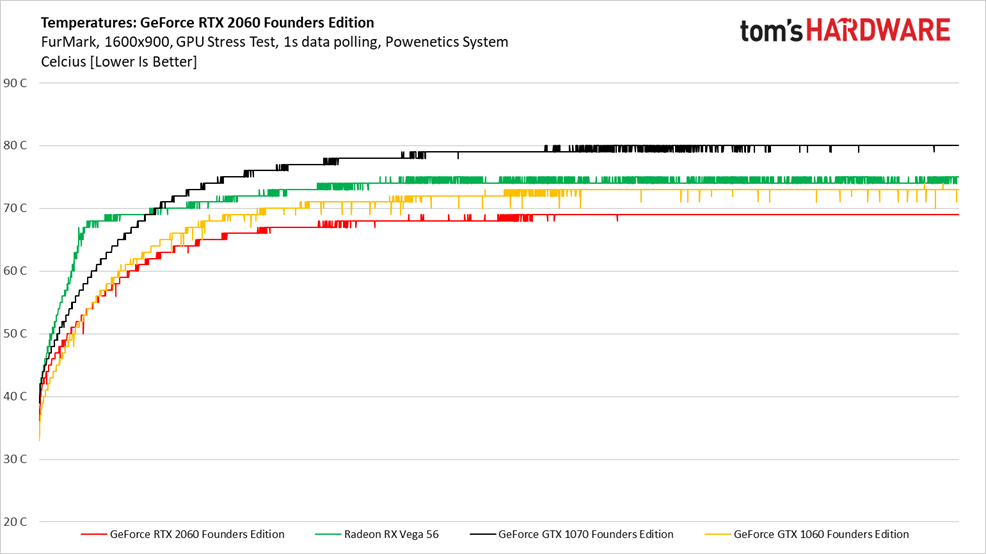Nvidia GeForce RTX 2060 Review: Is Mainstream Ray Tracing For Real?
Why you can trust Tom's Hardware
Temperatures and Fan Speeds
Gaming
RTX 2060’s big heat sink allows the dual axial fans to idle around 1,200 RPM for a while before they start spinning up. Nvidia’s curve is nice and gradual, peaking around 1,660 RPM by the end of our three-run loop.
GeForce GTX 1060 and 1070 and their centrifugal fans respond more immediately. The smaller blowers have to spin faster to pull air in and exhaust it out the back of Nvidia’s reference thermal solutions. But it’s AMD’s home-brewed Vega 56 that behaves the worst, spiking at 2,400 RPM before settling down around 2,100 RPM.
Although we don’t like that axial fans dump hot air back into your case, it’s hard to ignore that they spin slower and make less noise while still cooling a higher power GPU more effectively than a couple of blower-style systems. RTX 2060’s TU106 processor tops out at 69°C. At the opposite end of the field, GTX 1070 gets all the way up to 79°C.
Keep this voltage chart in mind as we move on to our FurMark testing. It’ll become clearer how much AMD and Nvidia both hit the air brakes to keep their GPUs under clearly defined power limits.
FurMark
Similar power profiles in FurMark and Metro result in similar temperatures, which call for fan curves that look almost the same.
A comparison of the temperature charts reveals very few differences.
Temperature, fan speed, power: all three are closely related,and largely affected by GPU voltage and frequency. This is the one chart that looks distinct (clock rate would as well, if we charted that). AMD and Nvidia both pull performance so that power doesn’t jump up above their TDPs.
Get Tom's Hardware's best news and in-depth reviews, straight to your inbox.
MORE: Best Graphics Cards
MORE: Desktop GPU Performance Hierarchy Table
MORE: All Graphics Content






